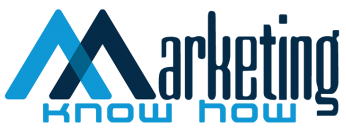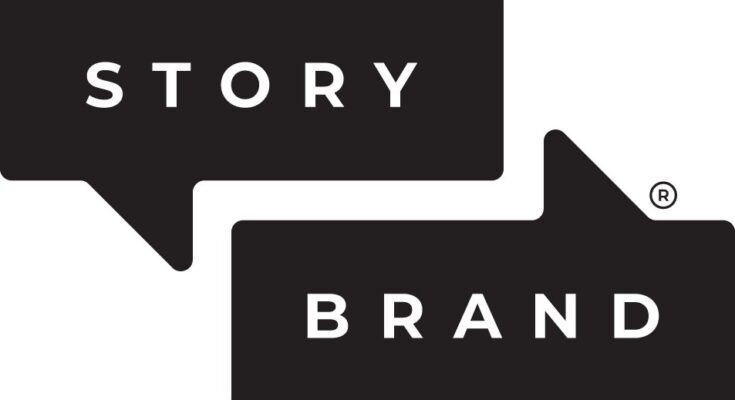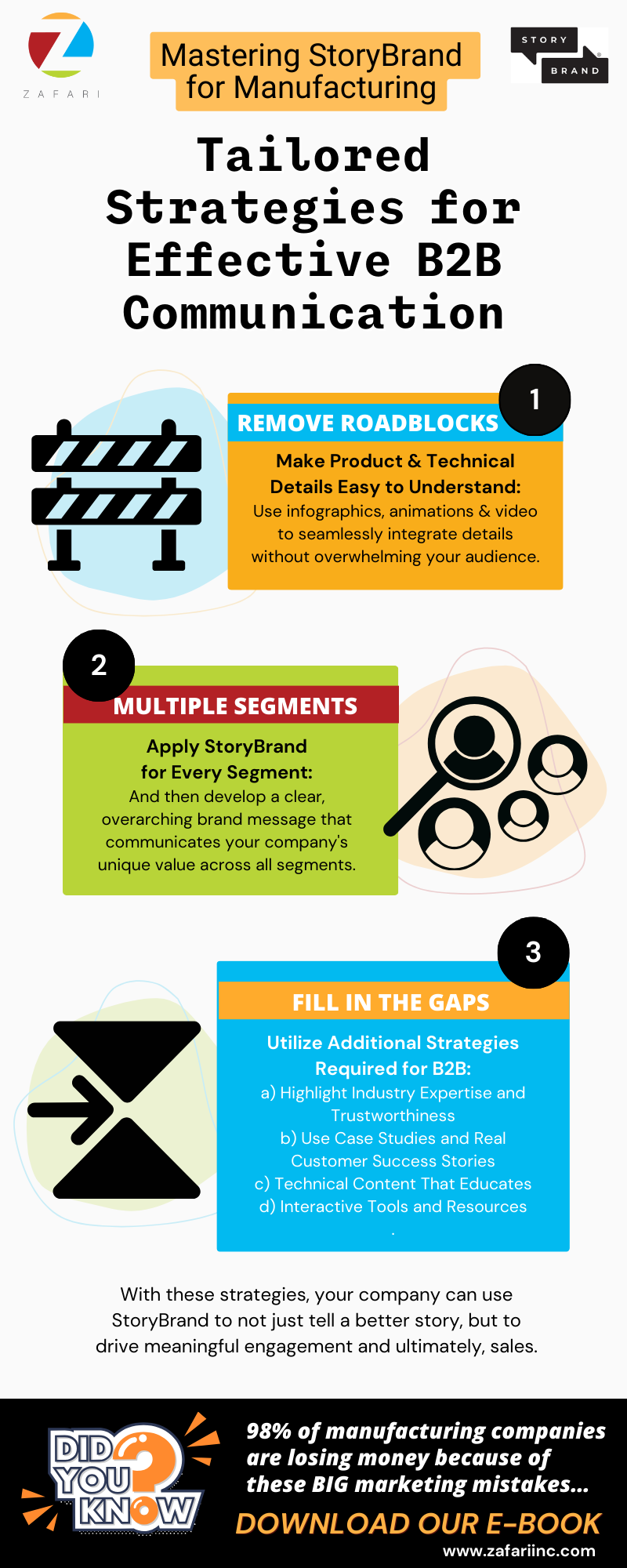In the complex landscape of manufacturing and B2B marketing, telling a compelling story that resonates with diverse market segments is a pivotal strategy for growth. StoryBrand, a popular framework developed by Donald Miller, helps companies clarify their messaging to ensure that customers understand their unique value propositions quickly. However, implementing StoryBrand in manufacturing requires careful adaptation to address the industry-specific nuances and challenges. This post explores how manufacturers can implement the StoryBrand framework with confidence, ensuring that product details, technical specifics, and diverse market needs are effectively integrated into their storytelling.
Getting Clarity on Product and Technical Details
One of the main challenges for manufacturers is deciding how, where, and when to include intricate product details and technical specifications within the StoryBrand framework. The key is to integrate these details seamlessly into your storytelling without overwhelming your audience. Start by identifying the core problems your product solves and anchor your technical details around these solutions. Use simple language to explain how your product works, focusing on benefits rather than features. For instance, rather than just listing product specs, explain how these features make your customer’s life easier or their operations more efficient. Utilizing simple infographics, animations and short videos to show the product benefits rather than tell about them to eliminate communication roadblocks that cause confusion is also a wise strategy.
Applying StoryBrand Across Multiple Segments
Manufacturers often serve multiple market segments, each with distinct needs and pain points. Applying the StoryBrand framework across various segments requires a modular approach to your messaging. Develop a clear, overarching brand message that communicates your company’s unique value. Then, tailor this message to address the specific concerns and aspirations of each segment. Create segment-specific versions of your StoryBrand BrandScript, ensuring that each adaptation speaks directly to the interests and challenges of that particular audience. On your website’s home page, offer segment offramps to enable each segment to easily move on to the messaging specifically relevant for them. This targeted approach helps in maintaining consistency in your core message while also resonating with a broader audience.
Filling in the Gaps for Manufacturers and B2B
While StoryBrand provides a robust framework for crafting compelling narratives, it doesn’t address all the nuances specific to the manufacturing and B2B sectors. To bridge these gaps, manufacturers need to enhance their StoryBrand implementation with additional strategies:
- Highlight Industry Expertise and Trustworthiness: In B2B and manufacturing, trust and credibility are paramount. Augment your StoryBrand framework by prominently featuring certifications, industry awards, and third-party verification that emphasize your expertise and reliability.
- Use Case Studies and Success Stories: Real-world examples of how your products have solved complex industry problems can be very powerful. Include detailed case studies in your marketing to provide context and demonstrate the effectiveness of your solutions in action. Just ensure the content is easy to understand and focuses on the problems solved for the customer.
- Technical Content That Educates: B2B buyers often require detailed technical information before making a purchase decision. Provide educational content, such as whitepapers, eBooks, and detailed blog posts, that delve deeper into the technical aspects of your products. This content should educate your prospects on the technical merits without deviating from the StoryBrand principles of clear and straightforward communication. Ask your customers and prospects where they struggled to understand technical benefits and what was the ‘aha!’ shift for them. This will help you identify potential roadblocks to understanding that can be addressed via quick, easy-to-understand illustrations, animations or videos.
- Interactive Tools and Resources: Offer tools like ROI calculators, product configurators, or interactive demos that help prospects understand the value of your solutions in a practical, engaging way. These tools should align with your StoryBrand narrative by focusing on solving the user’s problems and positioning your brand as the guide.
Implementing the StoryBrand framework in manufacturing and B2B sectors doesn’t have to be daunting. By focusing on clarity, customization, and complementing StoryBrand with industry-specific content strategies, manufacturers can craft narratives that not only captivate but also convert. With these strategies, your company can use StoryBrand to not just tell a better story, but to drive meaningful engagement and ultimately, sales.



